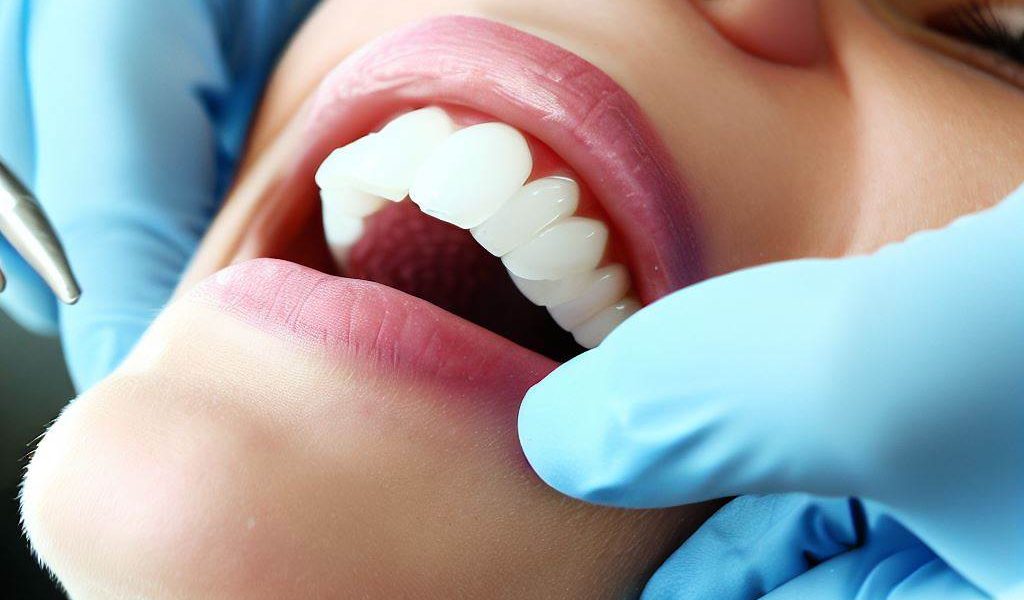Enhancing your overall health and well-being is closely tied to staying diligent with routine dental cleanings. These cleanings serve as a vital preventive measure against more serious oral health issues like gum disease and dental cavities that can ultimately result in tooth loss.
What is Dental Cleanings
A routine dental cleaning focuses on eliminating both soft and hard deposits, namely plaque and calculus, which accumulate above, around, and just beneath the gumline.
Routine Dental Cleaning vs. Deep Dental Cleaning
Apart from routine dental cleanings, dentists also provide deep dental cleanings for individuals with more extensive cleaning needs. Let’s delve into the distinctions between the two.
Routine Dental Cleaning
As mentioned earlier, a routine dental cleaning entails the removal of soft plaque and hard calculus or tartar deposits on the teeth, as well as around and above the gumline through a process called scaling.
Deep Dental Cleaning
A deep dental cleaning is a more comprehensive, lengthy, and potentially costlier procedure, depending on the severity of your condition. It serves as an effective treatment for gum disease before it progresses further. Also referred to as scaling and root planing or periodontal debridement, this method involves scaling in deeper areas along the roots of the teeth.
How long does a dental cleaning take?
This non-surgical procedure, known as scaling, can vary in duration depending on the condition of your teeth and gums upon arrival. On average, a dental cleaning takes slightly less than an hour.
Frequency of Dental Cleanings
Optimal oral health is often achieved by scheduling twice-a-year cleanings as recommended by dentists. However, if signs of gum disease are present, a shorter interval of every three to four months may be necessary.
The Dental Cleaning Experience
A dental cleaning encompasses more than just the removal of plaque from your teeth. The process involves eliminating both soft and hard deposits, known as plaque and calculus, from the tooth surfaces through scaling. Subsequently, any remaining plaque and stains are polished away using an abrasive paste. Since the gritty paste can become lodged between teeth, the procedure concludes with thorough flossing. Additionally, a fluoride treatment may be administered to enhance tooth strength and prevent cavities if required.
Post-Dental Cleaning Expectations
Following a dental cleaning, you may experience a peculiar sensation in your mouth. Delight will wash over you as you glide your tongue across your teeth, reveling in the smooth, plaque-free surface.
Your dental hygienist is an excellent resource for post-cleaning guidance. They may offer instructions on proper brushing and flossing techniques and provide insights on nutrition and smoking, both of which significantly impact your oral health.
Health Advantages of Dental Cleanings
Attending routine dental cleanings offers three key health benefits, namely:
Maintenance of oral health
Prevention of oral diseases
Early detection of oral diseases and infections
Individuals who neglect routine dental cleanings put themselves at risk of oral diseases such as cavities and gum disease. Furthermore, oral health is closely linked to overall systemic health. For instance, periodontal disease has been associated with various health conditions, including heart disease and diabetes. Additionally, routine examinations that typically coincide with dental cleanings play a crucial role in the early detection and treatment of oral cancers.
Cost of Dental Cleanings
The cost of dental cleanings can range from approximately $100 to several hundred dollars. In most cases, dental insurance plans cover 100% of preventive care expenses, while basic procedures like periodontal treatment for gum disease are typically covered at rates of 60% to 80%, depending on whether your dentist falls within your insurance network.



